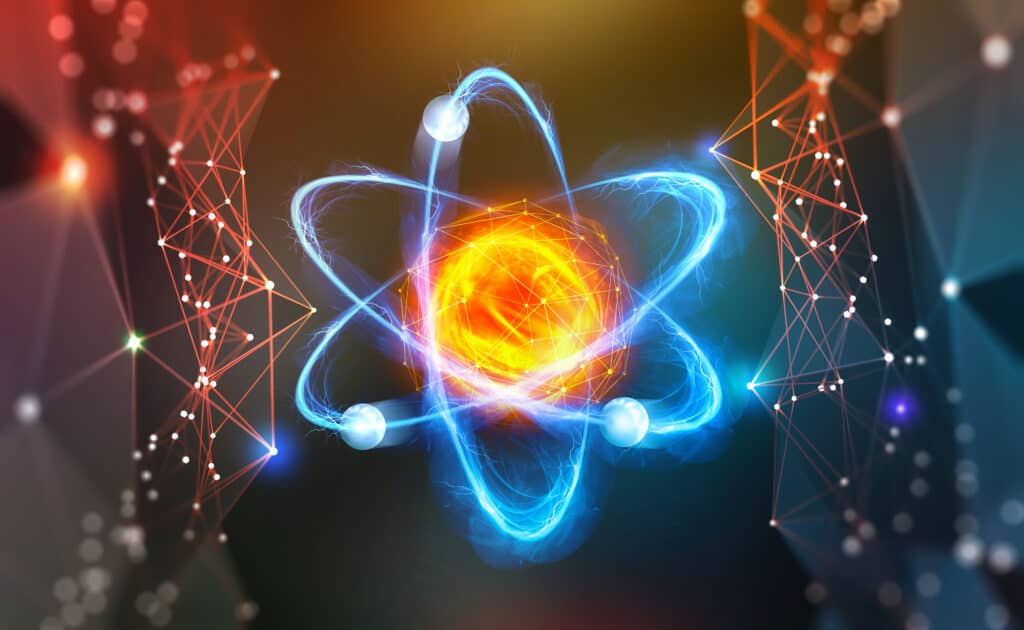The sun is one of the great “well-understood mysteries.” Science has it pinned down, but most people aren’t exactly sure how our flaming ball of light is working its magic.
You don’t need degrees in physics and chemistry to understand the degrees of heat produced by the sun. At the same time, It can get a little complicated when we’re thinking about just how much heat comes off of it.
The tough part is that you need to understand the “how” to fully appreciate the “how much.”
The following sections will give basic looks at how the sun produces heat as well as how much heat it emits at any given moment. When you understand these things, you’re one step closer to fully appreciating how a floating ball of gas in the middle of space nourishes our planet! It’s amazing stuff, and it’s about time we all learned more.
How The Sun Produces Its Heat
Say you had a suit that could shield you from any temperature. You slip this super-suit on, and you’re protected from the devastatingly extreme temperatures of the sun (anywhere from 5,000 degrees F to 27,000,000 degrees F, depending on where you are).
Now, you hop out of your spaceship to try and touch the sun’s surface but you find that there’s absolutely nowhere to land!
That’s because the sun is made of gas, and although it looks like a solid sphere, it’s only held in position by the immense force of its own gravity. According to Nebula Theory, stars like our sun are formed when large gaseous clouds called nebulas to succumb to their own immense gravitational force.

According to Nebula Theory, stars like our sun are formed when large gaseous clouds called nebulas to succumb to their own immense gravitational force.
©iStock.com/Ed Williams
Everything rushes down toward the center and the dense ball of atoms gets even more massive, creating a greater gravitational force that draws even more gas inward. The result is gravity so strong that atoms smash together in the process of nuclear fusion.
The Basics of Nuclear Fusion
The sun produces energy through the process of nuclear fission.
When gasses get enough energy (thermal or electrical), they can change state and become plasma. Though they change their physical state, their chemical nature remains pretty similar. The key difference between gas and plasma is the behavior of electrons.
When there’s enough heat, orbital electrons escape from their atoms, causing the gas to change state and form a plasma state. Some examples of plasma in nature are the Northern Lights and lightning bolts.
The temperature required to form plasma is lower than that of fusion, so the fusion in our sun always occurs when plasma is present. Plasma forms closer to the core of the sun because the core is much hotter than the outer layers, and fusion starts happening there shortly after.
When things get up to around 10,000,000 degrees, atoms are racing around at extremely high speeds, smashing into each other with an enormous amount of force. At lower temperatures, atoms are kept apart by the force of the electrical repulsion to one another (that’s why depictions of atoms always involve different particles bouncing around or simply giving each other a lot of space).
When there’s enough heat, though, that thermal energy compels the atoms to move faster than the electrons’ repulsion can bear, leading the nuclei to smash together and reformulate. The nuclei in question are hydrogen protons.
These lonesome specs of hydrogen get rammed together in such a way that they fuse, losing an electron in the process. When this fusion occurs, the protons in question merge to form helium.
This is why hydrogen and helium are the two most heavily present elements on the sun by far. Hydrogen makes up just under 75% of its mass while helium accounts for just under 25%. The remaining mass is taken up by heavier elements.

The sun produces energy through the process of nuclear fission.
©Yurchanka Siarhei/Shutterstock.com
Where Does The Heat Come From?
The name for this fusion of hydrogen protons into helium is called is a “proton-proton chain.” You’ll have to bear with a few scientific terms here, but see if you can follow the general process.
If you’re confused about the terms, do some research and you’ll find that most of the names make things sound more complicated than they are. That said, the general idea is that a massive amount of energy gets released every time a transition occurs.
To start, two lone protons smash into each other. They release energy (one positron and one neutrino) and one of the protons turns into a neutron in the process. The proton and neutron are now attracted to each other and form a bond.
This pair then fuses with another lone proton, releasing energy (a gamma-ray) in the process. At this stage, the molecule is referred to as helium-3 because it has two protons and one neutron.
This helium-3 is drawn to another helium-3 at the same stage in the process. Those two helium-3s merge, creating a helium-4. Two hydrogen protons are released in that exchange.
The explanation above is about as simple as it gets. For the purposes of our discussion, remember that each time these particles and molecules join, they release something.
The amount of energy released is summed up by Einstein’s famous equation! That’s right, now you can say that you kind of know what “e=mc^2” means.
The “m” in E=mc^2
Every microscopic piece of matter released in these transactions gets turned into energy. That little neutrino or electron shaved off in the process of nuclear fusion is the “m” (matter) in Einstein’s equation.
We can use this famous equation (e=mc^2) to figure out just how much energy gets released. Take the matter released in the transaction and multiply it by the speed of light (roughly 6.702 x 108 mph) squared.
Spare yourself the brainpower needed to figure out the answer to that equation. The amount of energy contained in a little proton is astronomical compared to its size. Plus, we have brilliant astrophysicists and mathematicians to handle that sort of math for us. We’ll look at exactly how much energy that is in practical terms in the next section.
These interactions are occurring billions and billions of times over, every instant that the sun sits up there producing light. So, just how much energy does the sun produce through nuclear fusion?
The Big Question: How Much Energy Emits From The Sun?
At the sun’s core, fusion produces heat of at least 27,000,000 degrees Fahrenheit, although not all of that heat gets released right away.
Energy is released in numerous ways. The energy produced from fusion exists in the form of electricity, radiation, wind, and, most importantly for us, sunlight.
All combined, the sun produces 380,000,000,000 terajoules of energy each second. One terajoule is equivalent to 1,000,000,000 joules. 3,600 joules are equivalent to one Watt Hour, and, to offer some perspective, most cell phones hold about 5 Watt Hours of charge.
If you add up the amount of energy used by all humans on the planet each year, we come to around 580,000,000 terajoules. The largest-ever nuclear bomb produced contained about 0.00034% of that energy, blowing out at around 200,000 terajoules.
So, the largest nuclear bomb that humans have ever deployed is an infinitesimal 0.00000053% of the amount of energy that the sun produces each and every second. This is a useful example, too, because nuclear bombs and the sun share the same method of producing energy.
Here are some key takeaways:
- In one second, the sun produces more than 600 years’ worth of human energy
- The sun lights off the equivalent of 1.9 million nuclear bombs each second
- All of the sun’s energy is produced by subatomic particles
How Long Will The Sun Last?
Each time a nuclear fusion reaction releases particles and energy out into the universe, a tiny portion of the sun’s mass goes out into the cosmos, too. Eventually, that will lead the sun to run out of fuel. Note that the sun’s fuel sources (hydrogen & helium) also constitute its mass.
Scientists’ best estimates say that this gives the sun around 4 billion years before it’s all dried up. Eventually, this reduced mass will shrink the gravitational force that the sun currently enjoys. When that happens, the sun will no longer be able to hold its contents in such a dense area, and the outer layers of gas will expand outward.
A sun in this stage of its life is called a “red giant” because it retains its color as it expands.
Over time, our sun might encompass the whole solar system, resulting in a planetary nebula. Larger stars end with a bang, producing supernovas. Ours will likely sprawl out and lay to rest as a beautiful gaseous cloud before it reformulates into something new.

A sun in this stage of its life is called a “red giant” because it retains its color as it expands.
©yurchak/Shutterstock.com
What Does That Mean for Humans?
Fortunately for us, humans aren’t likely to be around in 4-5 billion years. We won’t have to see the destruction of all life on earth unless we produce it ourselves, long before the sun swallows us up.
For a little context, the earth was formed around 4.54 billion years ago. Oceans formed one hundred million years later and the first signs of life are believed to have shown up around 260 million years after the formation of the earth. Anthropologists say Homo sapiens emerged around 315,000 years ago.
That means we’ve been around for about 0.00007 percent of the earth’s history. The point is, it’s doubtful that we’ll be here for another 4.5 billion years, so there’s no need to worry about the sun going out anytime soon.
Want to Learn More About Life Under The Sun?
- Discover The Largest Tsunami Known
- Discover the Least Crowded National Parks in Summer
- You Can Help Scientists Spot Walruses From Space!
- Discover the Sunniest Place on Planet Earth – (4,015 Hours A Year Of Sunshine!)
The photo featured at the top of this post is © iStock.com/hadzi3
Thank you for reading! Have some feedback for us? Contact the AZ Animals editorial team.






